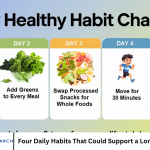
You’ve booked your first driving lesson and are absolutely terrified to face this ordeal. That knot in your stomach? Everyone gets it. Even people who pretend they don’t.
Walking up to that car with Topgear Driving Tuition for the first time feels like you’re about to do something completely unprepared for. Which, let’s face it, you probably are. But that’s fine. Nobody expects you to know what you’re doing yet.
They Won’t Throw You in at the Deep End
Your instructor isn’t going to hand you the keys and say, “Off you go then.” That would be mental. Instead, you’ll spend ages just sitting there whilst they explain everything. And I mean everything.
The handbrake, where the indicators are, and how to adjust your seat properly, all feel like information overload at first. You might think, “Can we just drive already?” But trust me, this bit matters.
Some instructors talk more than others. Mine wouldn’t shut up for the first twenty minutes. Keep going on about mirror positions and seat height. I thought it was a waste of time back then, but it wasn’t.
Getting to Grips with the Controls
The pedals feel weird under your feet. Especially if you’re learning a manual, that clutch pedal will be your nemesis for weeks.
Pressing the accelerator, the car jumps forward like it’s been stung. Everyone does this. Your instructor will have their foot hovering over their brake pedal, ready to save you from yourself.
Finding the biting point on the clutch is probably the most frustrating thing you’ll learn. It’s different in every car. Some bite high, some bite low. Your leg will ache from holding it in that weird position while you try to figure it out.
Your First Proper Drive
You won’t be going anywhere near busy roads. You’ll likely be in some quiet industrial estate or empty car park, which is good because you’ll be all over the place.
Steering feels completely unnatural at first. You turn the wheel, and nothing happens for a second. Then, suddenly, the car veers off in the entirely wrong direction. You overcorrect. Then overcorrect the other way. The car’s weaving about like you’ve had a few too many.
The Dual Control System Reality
The Dual Control System is something that might wind you up. Your instructor has pedals, too. They have brakes and clutches on their side that can override yours completely. The first time they use them, it feels like they don’t trust you.
But here’s the thing. They probably don’t trust you yet. And why should they? You’ve been driving for about ten minutes. You’d probably wrap the car around a lamppost given half a chance.
It’s not personal. It’s just sensible. Once you’ve proved you can handle the basics without endangering everyone within a three-mile radius, they’ll relax.
What Actually Goes Through Your Head
The whole time, you’re thinking way too much about everything. Where are your hands supposed to go on the steering wheel? Are you checking your mirrors enough? Too much? Is that pedestrian going to step out?
Your brain’s trying to process about fifteen different things at once. Meanwhile, your instructor’s chatting away like this is the most normal thing in the world. Which, for them, it is.
You’ll probably forget to indicate at least twice, brake too hard at a junction, or stall the engine if you’re learning manual. These aren’t disasters. It’s just Tuesday morning for your instructor.
The Highway Code Bits
Between the actual driving, your instructor might throw some theory questions from the Highway Codes at you. What does this sign mean? Who has priority here? When can you use your horn?
This part’s quite helpful, actually. Reading about road signs in a book is one thing. Having someone point them out while sitting in a car makes them stick in your brain better.
Some of the rules seem daft until you’re actually out there. Like, why do you need to check your mirrors before signalling? Or why you can’t just slam on the brakes whenever you feel like it.
When Things Go Pear Shaped
Something will definitely go wrong. Maybe you’ll stall right in front of another car. Or take a corner so wide you end up on the wrong side of the road. Your instructor will sort it out, but you’ll feel like a proper muppet.
The embarrassment is usually worse than the actual mistake. You’re convinced everyone’s looking at you, thinking, “Look at that idiot who can’t even drive in a straight line.” Most people aren’t paying attention to learner drivers, though. They’ve got their own stuff to worry about.
How Knackered You’ll Feel
An hour of concentrating that hard is exhausting. Your shoulders will ache from being tense the whole time. Your leg might be a bit wobbly from working the clutch. Your brain feels like it’s been through a blender.
This is entirely normal. Learning to drive uses muscles you don’t normally use, both physical and mental ones. The first few lessons are always tiring.
What Your Instructor’s Really Thinking
They’re not judging how rubbish you are. They’re looking at how you respond when things go wrong, whether you listen to instructions, and whether you can stay calm when you mess up.
Some people pick things up quickly. Others take longer. Neither way is wrong. Your instructor’s seen it all before. They know roughly how long different skills take to develop.
Setting Yourself Up for Success
Don’t expect miracles after one lesson. You won’t be ready for your test next week. Most people need months of regular practice before they’re anywhere near ready.
The whole process takes as long as it takes. Comparing yourself to your mates who passed ages ago isn’t helpful. Everyone learns differently.





